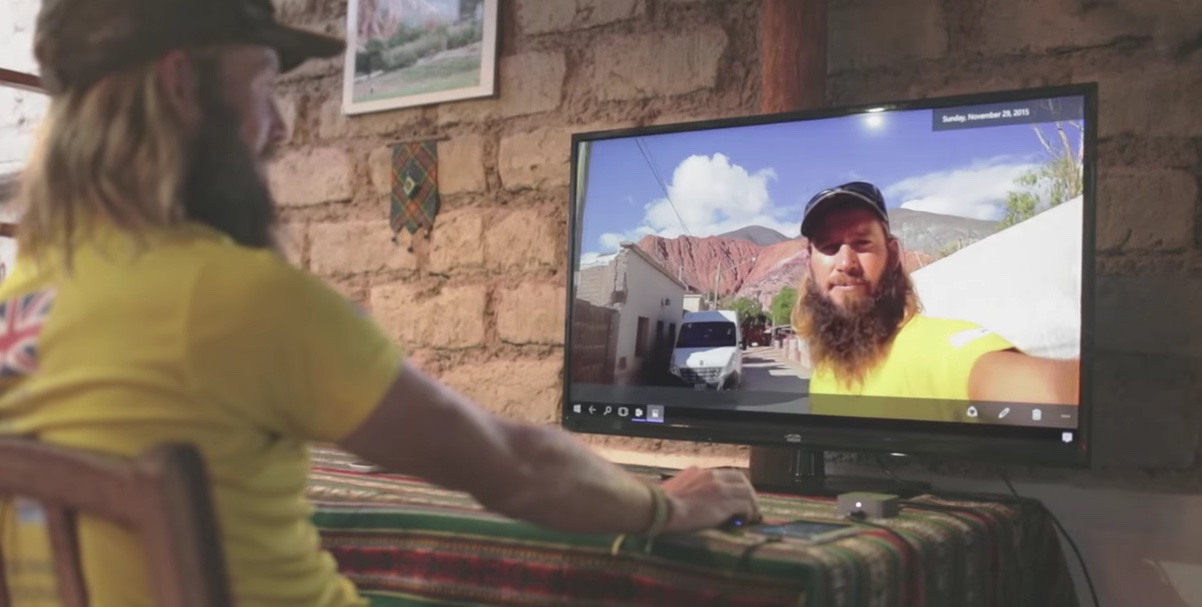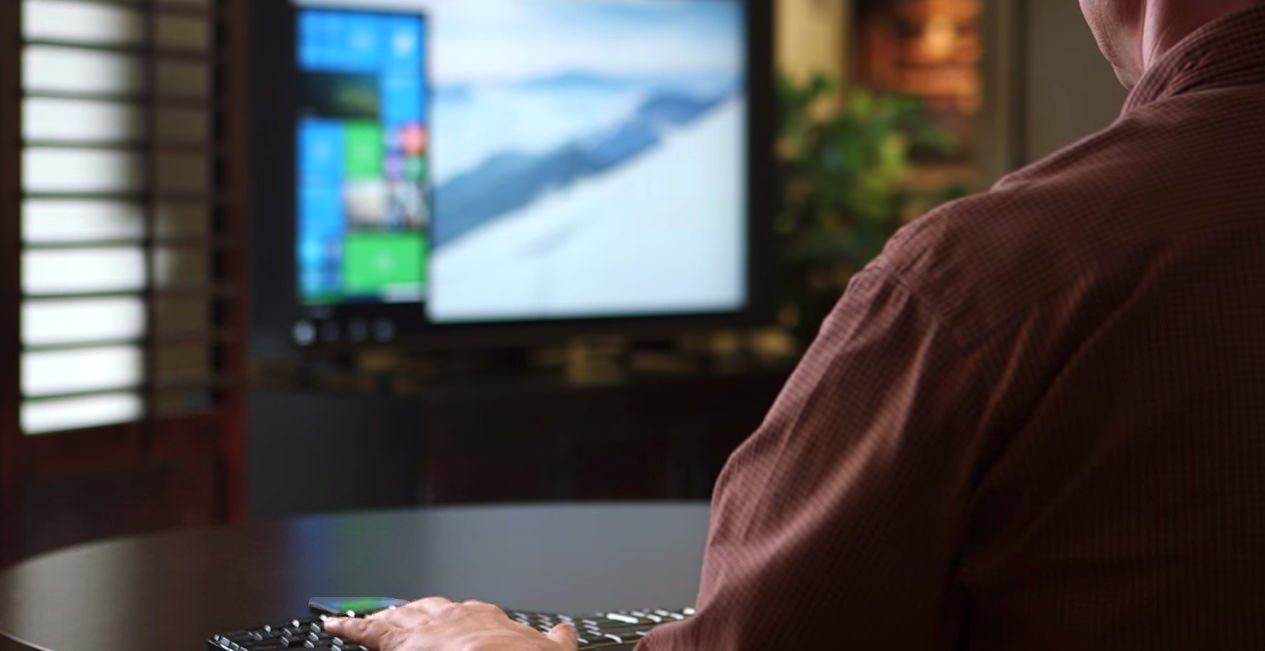
(Jamie Ramsay, from the Microsoft PR video, using Continuum on his north-south run)
So I have my Lumia 950 hooked up to the Microsoft Wireless Display adapter, tucked away behind the family TV set, in a spare HDMI port. I casually bring up the Continuum-connection to my Lumia 950 and suddenly people noticed that the family TV looked like a Windows 10 desktop. No one's exactly sure what's going on, so I start explaining.
"This is Windows 10 running on my phone" (I wave it about). Incomprehension. They're thinking "No, it's not, it's running on the TV, we can see it!"
"It really is, look!" I use the Continuum multi-touch trackpad on the Lumia 950 screen to start Outlook and then Edge and then Tweetium, swiping around the interface. The onlookers are impressed that I can use my phone as a wireless mouse but they're still wondering, at heart, how the big TV is suddenly a computer.
"Look, the TV is just a secondary display for the Windows 10 computer inside my phone!", I exclaim, sensing that I was losing people's attention. "Look, I can use the phone to play a game while the email and stuff happens on the TV screen - if you had a Bluetooth keyboard and mouse you could reply to email while I played!"
I'd quite clearly gone insane as far as my family and friends were concerned, the concept of Continuum was further than their minds could stretch.
"Can you play games on the big screen then?" was one intelligent question. "Well, not really, the games for Windows 10 have to be written to work with the second display" I admitted. "I can on my Android phone", someone pipes up, screen mirroring his Galaxy in seconds and then we could watch his HD game in high detail and this seemed to impress onlookers far more and far more quickly than my much more technical demo.
But then it's always this way. To quote the famous Arthur C Clarke quip, "Any sufficiently advanced technology is indistinguishable from magic", and I suspect that this is where Continuum is right now, especially when demoed without any obvious wires or workings. When users can't really get their head round what's going on, there's little incentive for them to want it.
So simple screen mirroring is easy and everyone gets it. Using a TV as a secondary display for a full computer inside a phone is 'hard' and almost no one 'gets it'.
________
The same was true with PureView reframing back in 2013. You may remember how that went:
"So, look, I've taken this 5 Megapixel photo, but it's really 38 Megapixels."
"Eh?"
"I mean, after I've taken it, any any point I can choose to 'reframe' it from the underlying 38MP image, cropping in to pick just part of the frame!"
"Cropping? You mean like I do on my Samsung?"
"No, no, this is REFRAMING. After I've err... cropped in, I STILL end up with a 5MP photo!"
"I thought you said it was 38MP? Or, if it WAS 5MP, then shouldn't it be less now?"
And so on. Even chatting amongst geeks at various pub events, it was clear that very, very few people even in the tech world actually understood what was happening when a photo was 'reframed' and why it was superior to a simple crop. It became, as you might imagine, for an enthusiast like myself, somewhat frustrating.
So, after the excitement and ambition of reframing on the Lumia 1020, we got to the Lumia 930/1520 and reframing was quietly dropped from the Lumia Camera application, first integrating it into Lumia Creative Studio and then dropping the whole idea for Windows 10 Mobile Camera, where 'cropping' means 'cropping' and the choice is just whether to have a lower (oversampled) or higher resolution original snapped in the first place.
And I can see Microsoft's point. If only 1% of users could understand what a feature did then by definition 99% couldn't and the feature should probably be simplified, however cool and clever it was.

This is kind of where Continuum is right now. If its software was feature complete (think remembering context), if far more applications and games were universal and worked with Continuum, if it were (ahem) a bit faster and more reliable, then I think more people might 'get it' and consider the technology a USP worth seeking out.
As it is, it's more of an 80% complete tech demo that's great at shows but gets rather blown away in real world user hands by the aforementioned and much simpler 'Screen mirroring'. The latter is an easy sell on any platform - what's on the phone screen is also what's on the connected screen, with just the odd concession to photo and video playback here and there. In contrast, Continuum requires videos and explanations and even then I'm still not sure most people understand what it does and how clever Windows 10 is being.
Let's stay optimistic though, Windows 10, Continuum, and firmware for the dock, and for the various compatible Lumias will all continue to improve over the next few months. I did see an excellent little example of Continuum in action here and I'd like to see more content like this from Microsoft, telling stories from real people who have found that the technology satisfies a genuine need.
The alternative would, as with the now foregone reframing, just be too sad.
